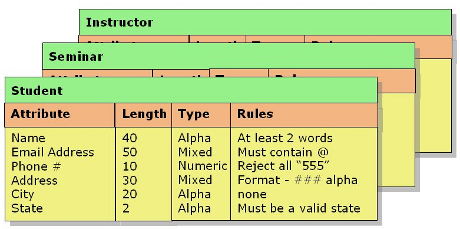21
2012
What is a Data Dictionary?
Because of the tremendous growth of multimedia applications, data can be transferred through various ways. Thus, data dictionary was conceptualized. Data dictionary is not your usually online database search engine, but this program supports the sharing of data from one country to another. Data dictionary, particularly its contents, is used to develop pdf files for data inputs on Excel templates. Data dictionary pioneered the notion on automated delivery of data from countries as well as the innovation of data delivery interface.
The Terms Described and Used by the Data Dictionary
The data dictionary holds or defines the datasets, tables and data elements. These three terms are defined by a group of attributes which corresponds to the ISO standards. But these attributes appears to be flexible, and change of data can readily be accessed.

The first term is the dataset. The dataset is a compilation of tables of a reported data. Oftentimes, these tables are presented in a single manner, and they are usually referred to as standalone or single databases. The dataset usually comes as a Microsoft access file or an excel file. Moreover, the dataset usually corresponds to a dataflow.
A table is simply the table seen in a dataset. The table is composed of two parts – the rows and the columns. The rows correspond to the values in the table, while the columns correspond to the data elements in the table.
The data element, which is located in the table’s columns, represents the content of the data dictionary. The two classes of data elements include the non-common element and the common element. The non-common element is situated in a certain area of the table. These elements cannot be altered or used by other tables. The non-common elements are defined within the qualifications of that certain table, and they cannot function outside that table. On the other hand, the common elements simply don’t belong to a certain table. Unlike the non-common elements, common elements can be part of other tables. They are also called harmonious elements. They are used to supplement other datasets and tables. The best example of a common element is the country code.
The Importance of the Data Dictionary
Data dictionary is essential for data reporting, data defining as well as for dataflow administrators. The data dictionary precisely provides the countries with appropriate specifications about a certain report or issue. The DD also provide excel templates for data reporters, so that data reporting will be easy. The DD also provides the criteria for the quality and validation of reported data. The data dictionary also provides the information on the country with an available point of reference for the reported data. Lastly, the data dictionary provides the perfect environment for discussion, processing and reporting of data available. Thus, users will have a glimpse on the changes for any reports or development of new ones.
The contents of the data dictionary are usually long-term, but it doesn’t mean that updates are not done regularly. The contents of the DD are usually updated depending on the available data source or the new dataflow collection.
Further readings
Advertisements
Recent Posts
- What is a Disaster Recovery Data Center
- What is a Relational Database?
- What is a Flat File Database?
- What is a DSN or Database Source Name?
- What is a Disaster Recovery Plan?
- What is an Open Source Database?
- What is Disaster Recovery?
- What is a Database Cluster?
- What are Database Servers?
- What are Database Forms?

 An article by
An article by 




